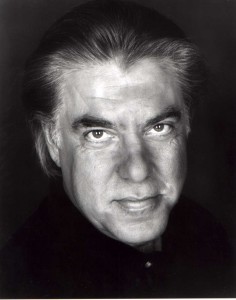 There’s a great deal of talk in golf right now about renovation: Donald Trump is planning to spend $150 million to renovate the Doral Resort; the PGA Tour is renovating Q-School; Bubba Watson is renovating his trophy case.
There’s a great deal of talk in golf right now about renovation: Donald Trump is planning to spend $150 million to renovate the Doral Resort; the PGA Tour is renovating Q-School; Bubba Watson is renovating his trophy case.
The game of golf is always changing, always evolving: Equipment improves, courses get longer, players get stronger. But is that enough? The writers at The A Position, the web’s top site for golf and travel don’t think so. In fact, they have a few smart suggestions for renovations that would truly improve the game.
Joining them is actor Bruce McGill, who has had a long career in movies and television, and is also a dedicated golfer. Now starring in the TNT series “Rizzoli and Isles,” he’s probably best-known for portraying Daniel Simpson Day—“D Day”—in the legendary comedy “Animal House,” where he turned a Lincoln Continental into the fraternity’s “Deathmobile.” Now that’s renovation. And so are the following.
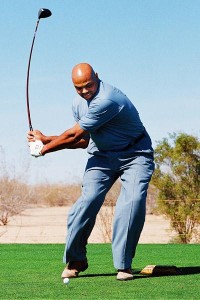 Since Hank Haney failed, I would renovate Charles Barkley. It would be very interesting and would take some work to get inside the “Round Mound of Rebound,” but I’d be glad to do it in the interest of entertainment. We’d probably go to Lake Tahoe, lie on the beach, talk for a while, and when I got him to a vulnerable spot I’d ask, “Why do you do that?” I’m not sure it’s mental, but it’s deep in his golf soul. He was so good at everything else that something in there makes him arrest himself at golf. But I will say this: I’ve never seen anybody play so badly with such a good attitude.
Since Hank Haney failed, I would renovate Charles Barkley. It would be very interesting and would take some work to get inside the “Round Mound of Rebound,” but I’d be glad to do it in the interest of entertainment. We’d probably go to Lake Tahoe, lie on the beach, talk for a while, and when I got him to a vulnerable spot I’d ask, “Why do you do that?” I’m not sure it’s mental, but it’s deep in his golf soul. He was so good at everything else that something in there makes him arrest himself at golf. But I will say this: I’ve never seen anybody play so badly with such a good attitude.
—Bruce McGill
A scant 20 miles from New York City is Lido Golf Club on Long Beach Island. The 1948 design of this public facility is attributed to Robert Trent Jones. But that’s not the real Lido. The original Lido Club was designed by C.B. Macdonald and Seth Raynor to eclipse all other creations. Over two million cubic yards of sand was dredged from Reynolds Channel and smeared across desolate salt marsh to create a canvas for the routing. The layout had alternate routes to each green and brilliant examples drawn from the Macdonald-Raynor playbook, including Eden, Alps, Cape, and Redan holes. When it opened in 1918, Lido, the greatest manufactured links ever built, rivaled the National Golf Links of America as the nation’s finest course. Alas, this spectacular venue, which cost nearly $1.5 million to complete, did not survive the stock market crash of 1929 and was later appropriated by the U.S. Navy. The Lido should be fully restored by a panel of sympathetic experts and operated as a walkers-only state park course (like Bethpage Black).
—Brian McCallen, brianmccallen.com
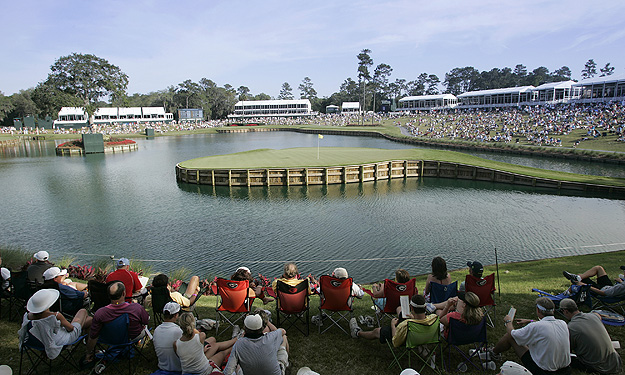
Here is an easy and timely fix: Change the playoff format for The Players Championship. Largely due to television considerations, the Players relies on an unfair sudden-death-playoff format whereby a single shot or hole may decide the winner. Remember the playoff begins on the devilish par-three 17th, where a sudden breeze knocked down Paul Goydos’ iron shot in 2008 in a one-and-done anti-climatic outcome with Sergio Garcia? A “wannabe” major like the Players deserves a more fitting resolution. As in the case of the British Open and the PGA, a multi-hole aggregate score playoff is more equitable and delivers even more compelling theatre. Have it be contested over the reachable par-five 16th, the 17th, and the ever-scary 18th hole. And start the final round an hour earlier to allow more daylight on the drama.
—Terry Moore, teemoore.com
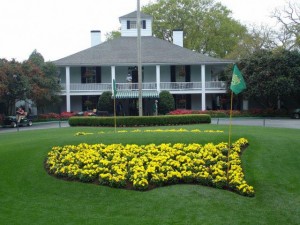 Augusta National’s exclusionary membership policies are common knowledge. Yet every year since 1966, the course has been near the top of Golf Digest’s ranking of America’s 100 Greatest Golf Courses, along with the equally discriminatory Pine Valley. Golf Digest’s 1,000-plus panelists play and rate more than 1,700 courses on seven criteria: shot values, resistance to scoring; design variety, memorability, aesthetics, conditioning, and ambience (described as how the feel and atmosphere of the course uphold the traditional values of the game). Considering scores are sometimes less than a full point apart (in 2011, Augusta National edged out Pine Valley by 38-hundredths of a point), it seems neither should have been anywhere near the top if “ambience” applied to both men and women. I believe any course that discriminates should get no more than a big fat zero in ambience. Until the Golf Digest panelists renovate their tolerance, and in some cases, nearly rabid defense, of private club discrimination, America’s 100 Greatest Courses will be hollow and meaningless for at least half of America’s population.
Augusta National’s exclusionary membership policies are common knowledge. Yet every year since 1966, the course has been near the top of Golf Digest’s ranking of America’s 100 Greatest Golf Courses, along with the equally discriminatory Pine Valley. Golf Digest’s 1,000-plus panelists play and rate more than 1,700 courses on seven criteria: shot values, resistance to scoring; design variety, memorability, aesthetics, conditioning, and ambience (described as how the feel and atmosphere of the course uphold the traditional values of the game). Considering scores are sometimes less than a full point apart (in 2011, Augusta National edged out Pine Valley by 38-hundredths of a point), it seems neither should have been anywhere near the top if “ambience” applied to both men and women. I believe any course that discriminates should get no more than a big fat zero in ambience. Until the Golf Digest panelists renovate their tolerance, and in some cases, nearly rabid defense, of private club discrimination, America’s 100 Greatest Courses will be hollow and meaningless for at least half of America’s population.
—Susan Bairley, susanbairley.com
 We often discuss the impediments to growing the game of golf. I contend the Rulebook is a serial offender in that regard. This Byzantine pamphlet of indecipherable legalisms claims to have 35 basic rules. Once parsed, there are multiple facets of each rule that require an actual book to explain the decisions these rules have spawned. We renovate golf courses; let’s renovate the Rulebook. The basic tenet of the game is hit the ball until it’s in the hole. Play it as you find it. If you can’t find it or play it, drop a ball, add a shot, and keep playing. Play quickly. Be fair. Be fair with your fellow competitor. Be a gentleman. Have fun! After all, it’s a game, not rocket science.
We often discuss the impediments to growing the game of golf. I contend the Rulebook is a serial offender in that regard. This Byzantine pamphlet of indecipherable legalisms claims to have 35 basic rules. Once parsed, there are multiple facets of each rule that require an actual book to explain the decisions these rules have spawned. We renovate golf courses; let’s renovate the Rulebook. The basic tenet of the game is hit the ball until it’s in the hole. Play it as you find it. If you can’t find it or play it, drop a ball, add a shot, and keep playing. Play quickly. Be fair. Be fair with your fellow competitor. Be a gentleman. Have fun! After all, it’s a game, not rocket science.
—Casey Alexander, caseyalexandergolf.com
My renovation project would be Tiger Woods. Too obvious, you say? Seriously, I could fix him. Woods defines “Opportunity Lost” and I am not speaking of just his golf game or bank account. He has had the opportunity to impact many in and beyond the game to what all his good qualities can accomplish. Sadly he disguised and sullied them in a cloak of hubris, deceit, and immaturity. Woods misses having a “Father Figure” and is unfortunately surrounded by too many yes men. Professionally I coach people like Tiger and take them beyond success to significance, but until the pain becomes great enough, Tiger Woods won’t change. It’s never too late to finish strong, and consider the potential he still has to favorably impact folks in golf and beyond—just as Earl Woods hoped and predicted. Imagine the possibilities. Tiger, if you’re reading this, let’s talk.
—Bob Fagan, robertfagan.com
Golf has declining participation and needs fresh thinking to both attract new golfers and keep those who now play. Surveys show the time needed for a round and cost as the main reasons. To address both of those roadblocks, let’s make golf more user-friendly. Courses could charge by the hour rather than for 9 or 18 holes. During slow times sell a two-hour pass good for as many holes as you can play in that time…or one hour or whatever. As an added benefit, slow play would be virtually eliminated since everyone would try to get in as many holes as possible. Public courses would be able to provide the same benefit private courses enjoy, being able to stop by at odd times to play a few quick holes.
—Ed Travis, edtravisgolf.com
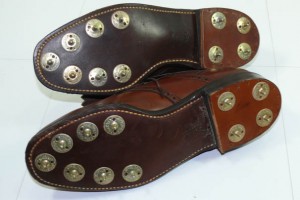 Golf is a quiet game. Marshalls at tournaments even hold up signs exhorting people to pipe down. Sneeze when Tiger is about to tee off and you’re liable to be ushered from the property or sued or both. In fact, golf is too quiet a game. And the sound I miss most is the cheerful clackety-clack of metal spikes. In the old days, when you changed from street shoes into your metal spikes, you knew you were going into battle. You were girding not your loins but your feet, and you and your feet both knew it. Those metal spikes provided far superior stability to today’s soft spikes. And while soft spikes are easier on putting greens, my putting stinks anyway so I don’t derive any benefit from that. Bring back metal spikes, I say, and let the parking lots sing once again with the happy sound of properly shod feet.
Golf is a quiet game. Marshalls at tournaments even hold up signs exhorting people to pipe down. Sneeze when Tiger is about to tee off and you’re liable to be ushered from the property or sued or both. In fact, golf is too quiet a game. And the sound I miss most is the cheerful clackety-clack of metal spikes. In the old days, when you changed from street shoes into your metal spikes, you knew you were going into battle. You were girding not your loins but your feet, and you and your feet both knew it. Those metal spikes provided far superior stability to today’s soft spikes. And while soft spikes are easier on putting greens, my putting stinks anyway so I don’t derive any benefit from that. Bring back metal spikes, I say, and let the parking lots sing once again with the happy sound of properly shod feet.
—David DeSmith, daviddesmith.com
The Humana Challenge—the old Bob Hope Chrysler Classic—has three notable public venues at its immediate disposal; all at one time figured in the rotation. The logistics of clustering proceedings near PGA West is understandable (right up to the point you consider how they handle Monterey). Stadium Course is cranky (it’s also right across the street). The wind does blow at Classic Club. SilverRock was late to the game. I get all that. I don’t care. No one thinks of the Challenge without envisioning Bob and Arnie. That would be the people’s entertainer, the people’s pro. We the people want some people golf. TPC Stadium is an awesome train-wreck of a venue. Classic Club was purpose-built to host this event. SilverRock is a true muni, except for the part about it being a compelling track; Arnie’s guys did the design work. As with Augusta National’s “commitment” to grow the game while itself excluding more than half the population, the tour could take a big step toward connecting in a downwardly spiraling golf economy by trading out one set of condos for some spirited action that just happens to embrace the public the other 51 weeks of the year.
—Ken Van Vechten, kenvanvechten.com
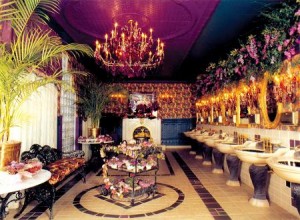 Nothing says “you’re an afterthought” more than what masquerades as the ladies’ locker rooms at most clubs. Is it any wonder women don’t embrace the game when they walk into cramped and often spartan facilities then learn the men’s counterpart is lavish to the extreme? Half-lockers? Really. To renovate this abysmal lack of judgment by club developers, hire Branson, Missouri’s top entertainer and golf fan Shoji Tabuchi, who not only wows folks as the preeminent Japanese country-western fiddler, but whose theater’s lounges were voted best in the United States. What woman wouldn’t want exotic flowers and orchids gracing granite and onyx pedestal sinks crafted with gold-leaf mirrors? Or Italian crystal chandeliers illuminating spacious quarters while an attendant hands out fragrant lotions and scents from the perfume cart? Let Shoji oversee plans for a spacious re-design of golf clubs’ women’s facilities. And while he’s at it, throw in that $35,000 hand-carved mahogany pool table in the men’s room: Pool practice will improve hand-eye coordination for any woman golfer.
Nothing says “you’re an afterthought” more than what masquerades as the ladies’ locker rooms at most clubs. Is it any wonder women don’t embrace the game when they walk into cramped and often spartan facilities then learn the men’s counterpart is lavish to the extreme? Half-lockers? Really. To renovate this abysmal lack of judgment by club developers, hire Branson, Missouri’s top entertainer and golf fan Shoji Tabuchi, who not only wows folks as the preeminent Japanese country-western fiddler, but whose theater’s lounges were voted best in the United States. What woman wouldn’t want exotic flowers and orchids gracing granite and onyx pedestal sinks crafted with gold-leaf mirrors? Or Italian crystal chandeliers illuminating spacious quarters while an attendant hands out fragrant lotions and scents from the perfume cart? Let Shoji oversee plans for a spacious re-design of golf clubs’ women’s facilities. And while he’s at it, throw in that $35,000 hand-carved mahogany pool table in the men’s room: Pool practice will improve hand-eye coordination for any woman golfer.
—Janina Jacobs, janinajacobs.com
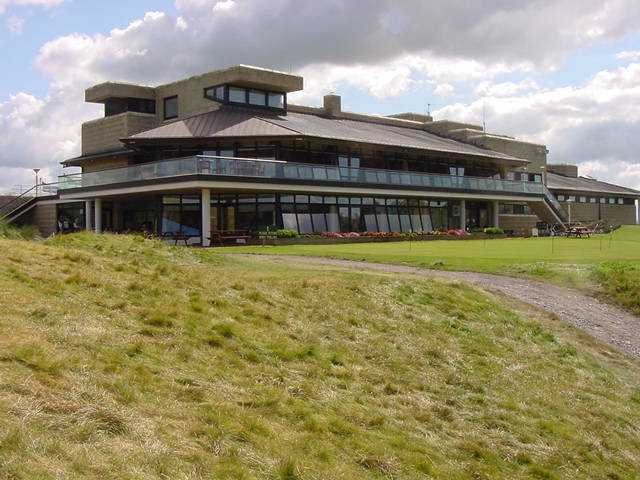 As Woody Allen would have it, I’m at two with the universe. My most recent memory of Ballybunion is of looking down the 18th fairway at the Old Course. A dazzling afternoon in early August—“the best weather day of the year so far,” according to a caddie—a contingent of European and American golf writers over for the Irish Open sipped from pints on the deck of the “new” clubhouse. Under the circumstances, it seems a bit churlish to point out that I’ve thought of the clubhouse as an uncomfortable fit with the course (and yes, I know I’m not the first to say so). Something more consonant with the gritty town and the ancient linksland, a sort of reverse renovation, is what I had in mind. Easy to say, of course, from the business end of the cash register. The clubhouse—it dates to the club’s centenary in 1993—would look great in Scottsdale. Its profile is modest, the circulation patterns are fine, and they’ve capitalized handsomely on the Ballybunion name with a humming pro shop. As an architect friend once remarked: “People forget there’s a client somewhere in the equation.”
As Woody Allen would have it, I’m at two with the universe. My most recent memory of Ballybunion is of looking down the 18th fairway at the Old Course. A dazzling afternoon in early August—“the best weather day of the year so far,” according to a caddie—a contingent of European and American golf writers over for the Irish Open sipped from pints on the deck of the “new” clubhouse. Under the circumstances, it seems a bit churlish to point out that I’ve thought of the clubhouse as an uncomfortable fit with the course (and yes, I know I’m not the first to say so). Something more consonant with the gritty town and the ancient linksland, a sort of reverse renovation, is what I had in mind. Easy to say, of course, from the business end of the cash register. The clubhouse—it dates to the club’s centenary in 1993—would look great in Scottsdale. Its profile is modest, the circulation patterns are fine, and they’ve capitalized handsomely on the Ballybunion name with a humming pro shop. As an architect friend once remarked: “People forget there’s a client somewhere in the equation.”
—Tom Harack, tomharack.com
For 55 years, the USGA produced an excellent magazine called Golf Journal, with articles ranging from championship reports to course histories, rules explorations to profiles of unsung heroes of the game. America’s national golf body shut it down in 2003, and replaced it with a newsletter and website content. Oh, and since 2003, the USGA has taken on corporate partners who provide significant income for the organization. The New York area’s Metropolitan Golf Association puts out Met Golfer, a well-written, well-designed magazine for its members. Seriously, the USGA can’t find a way to do the same with all the sponsorship dollars and membership fees it pulls in? Golf Journal was an important record of the game’s history, and it should still be today.
—Jeff Neuman, neumanprose.com
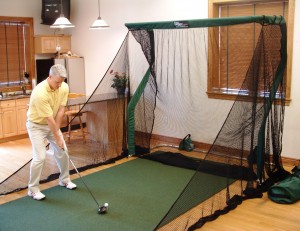 One element taken for granted in golfers’ learning and development is where we learn. Rather than hitting balls in the traditional environs of a practice range, I propose less time on the range and more hitting balls into a net. Why? Hitting into a net makes you prioritize the following: 1) Swings that feel good; 2) Solid ball contact. Freed from the distractions of watching and judging every shot’s outcome, you experience how a good swing feels. It is said that Fred Couples practiced the winter months in his garage hitting balls, while Kathy Whitworth did the same for six months before she was allowed on the golf course. Building a swing without distraction (looking up to see where the ball goes on every shot) is pure bliss, and whether in your basement or backyard a net requires minimal space. Sessions on the practice range are necessary, of course, but the net is your sanctuary, the place to develop a powerful and repeatable swing—and where you’re free to experiment. So to develop a great golf game, get a net!
One element taken for granted in golfers’ learning and development is where we learn. Rather than hitting balls in the traditional environs of a practice range, I propose less time on the range and more hitting balls into a net. Why? Hitting into a net makes you prioritize the following: 1) Swings that feel good; 2) Solid ball contact. Freed from the distractions of watching and judging every shot’s outcome, you experience how a good swing feels. It is said that Fred Couples practiced the winter months in his garage hitting balls, while Kathy Whitworth did the same for six months before she was allowed on the golf course. Building a swing without distraction (looking up to see where the ball goes on every shot) is pure bliss, and whether in your basement or backyard a net requires minimal space. Sessions on the practice range are necessary, of course, but the net is your sanctuary, the place to develop a powerful and repeatable swing—and where you’re free to experiment. So to develop a great golf game, get a net!
—Roberto Borgatti, robertoborgatti.com
